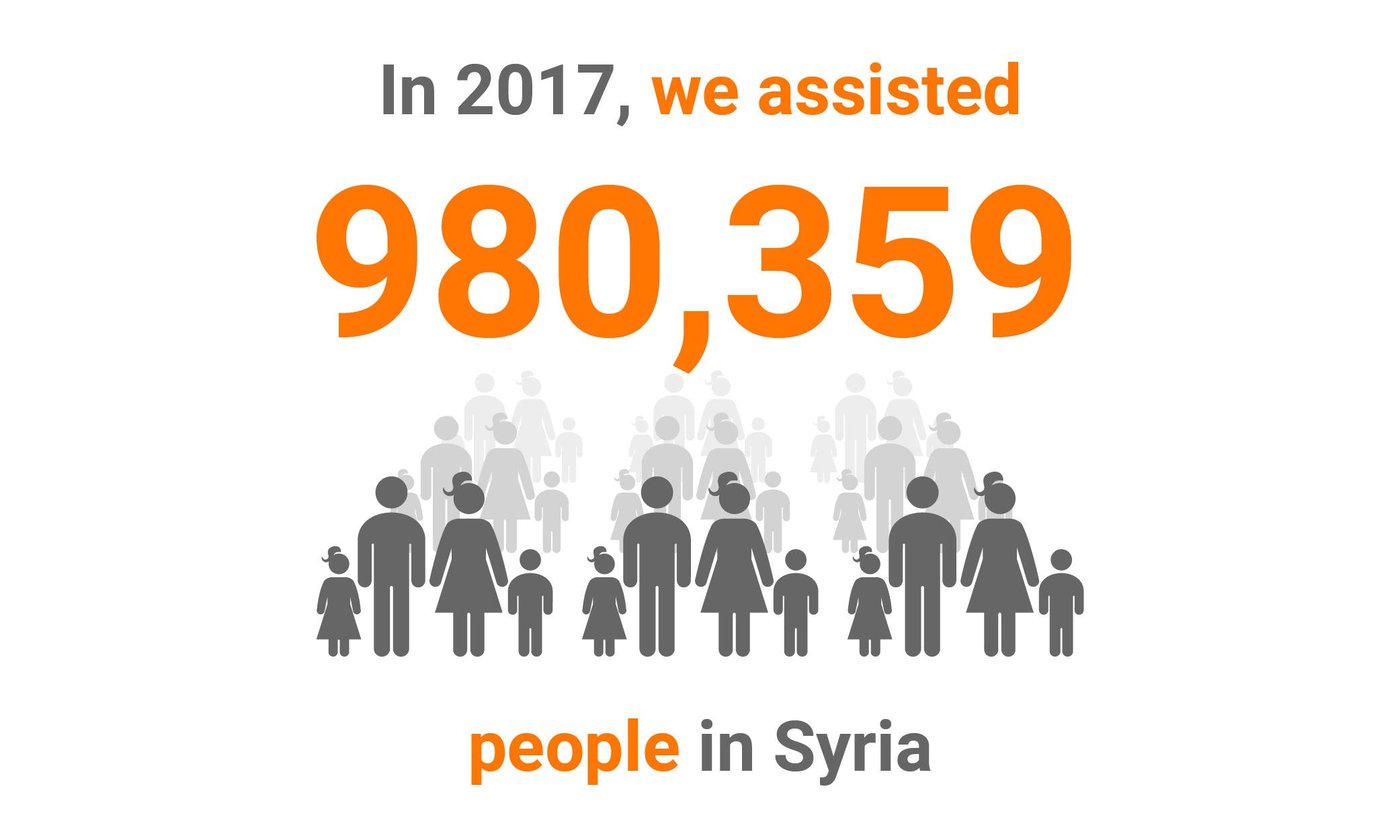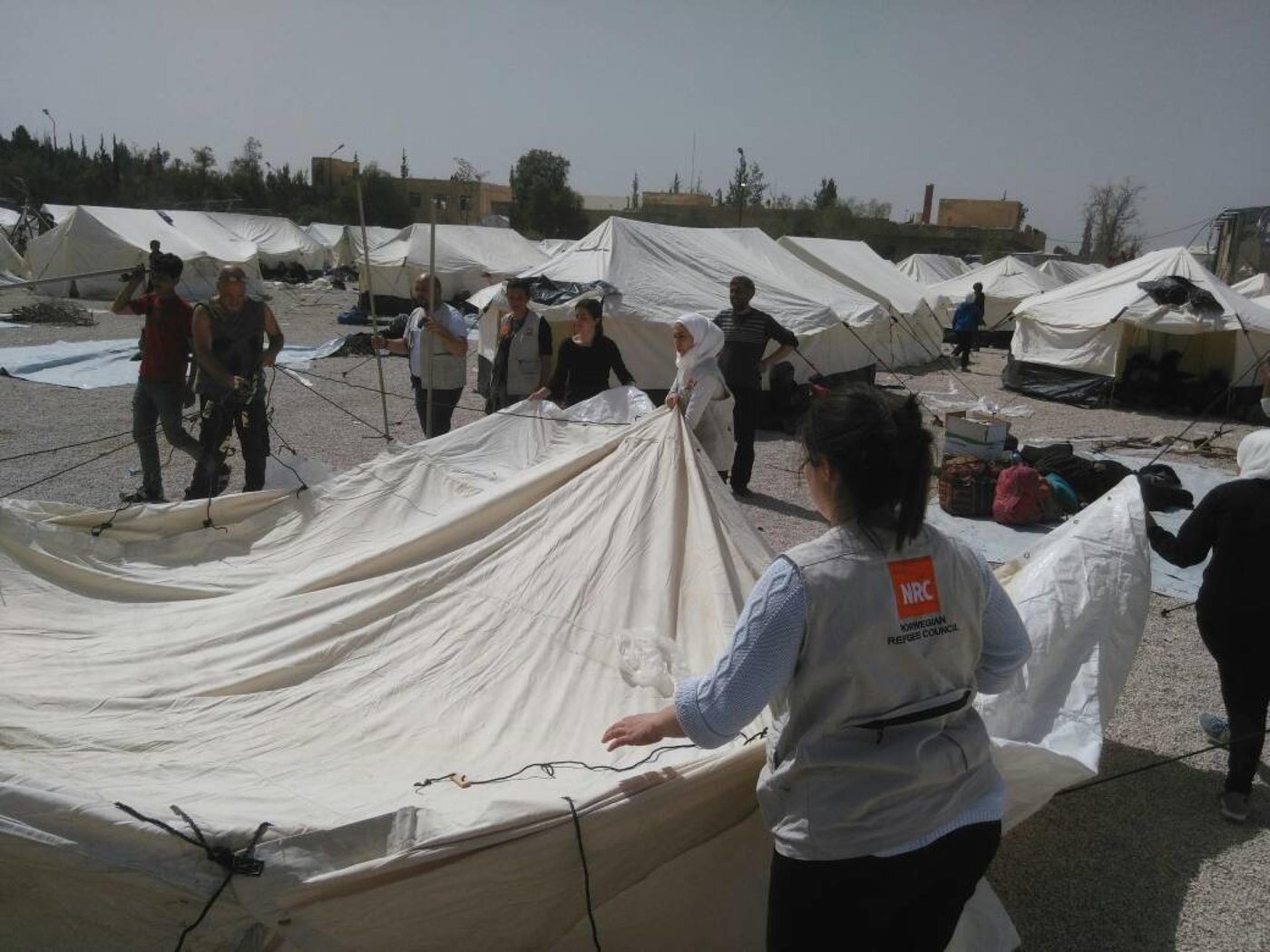The first thing we do is try to find out what has happened," says the Norwegian Refugee Council’s (NRC) roving logistics manager Jenny Archibald. She is currently working in NRC’s Syria operation, managing aid distributions to displaced people inside the war-torn country.
"We always ask: is an entire population affected or specific groups within the population? Where have they gone, what are their needs and what can we do?"
Reaching the newly displaced
Countless times over the past eight years, people inside Syria have encountered levels of violence so great that they have been forced to flee in search of safety. Very often, NRC has received women, children and men arriving at shelters tired, hungry and fearful of what may come next. Sometimes people have fled with just the clothes on their back. In the initial days of an emergency, and the days to come, they rely heavily on assistance from humanitarian organisations.
We always ask: is an entire population affected or specific groups within the population? Where have they gone, what are their needs and what can we doJenny Archibald, roving logistics manager in NRC
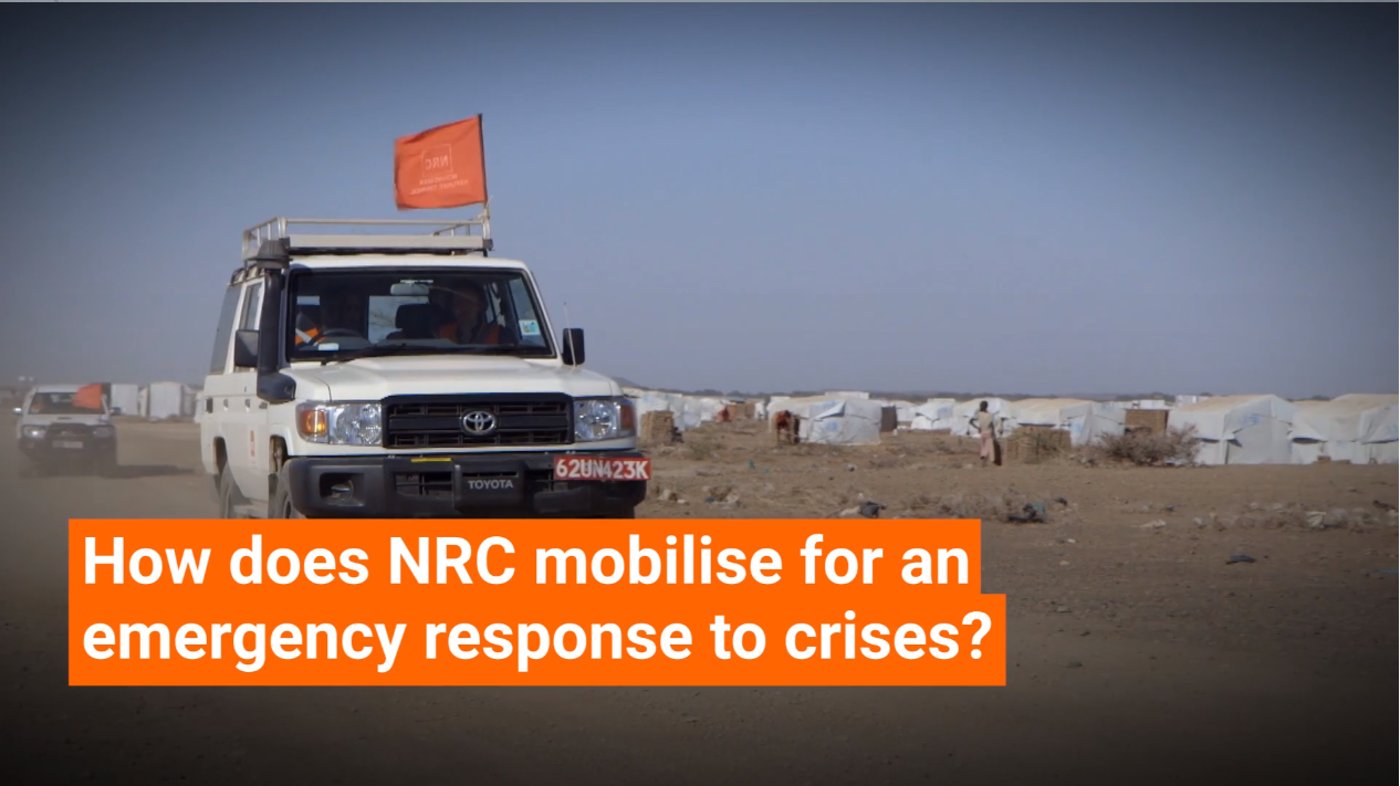
After finding out who’s affected, the next step is to find out how to reach them.
"We always have to figure out how we’re going to transport the aid, whether it’s by air, by sea, river, road," says Archibald. "We usually use trucks, but sometimes that’s not possible. In some locations we might have to use motorbikes, helicopters or boats."
In some areas we might require certain permissions to access a village or a population. One of NRC’s roles is to negotiate access with those who are in control to delivery timely and appropriate aid to people in need.
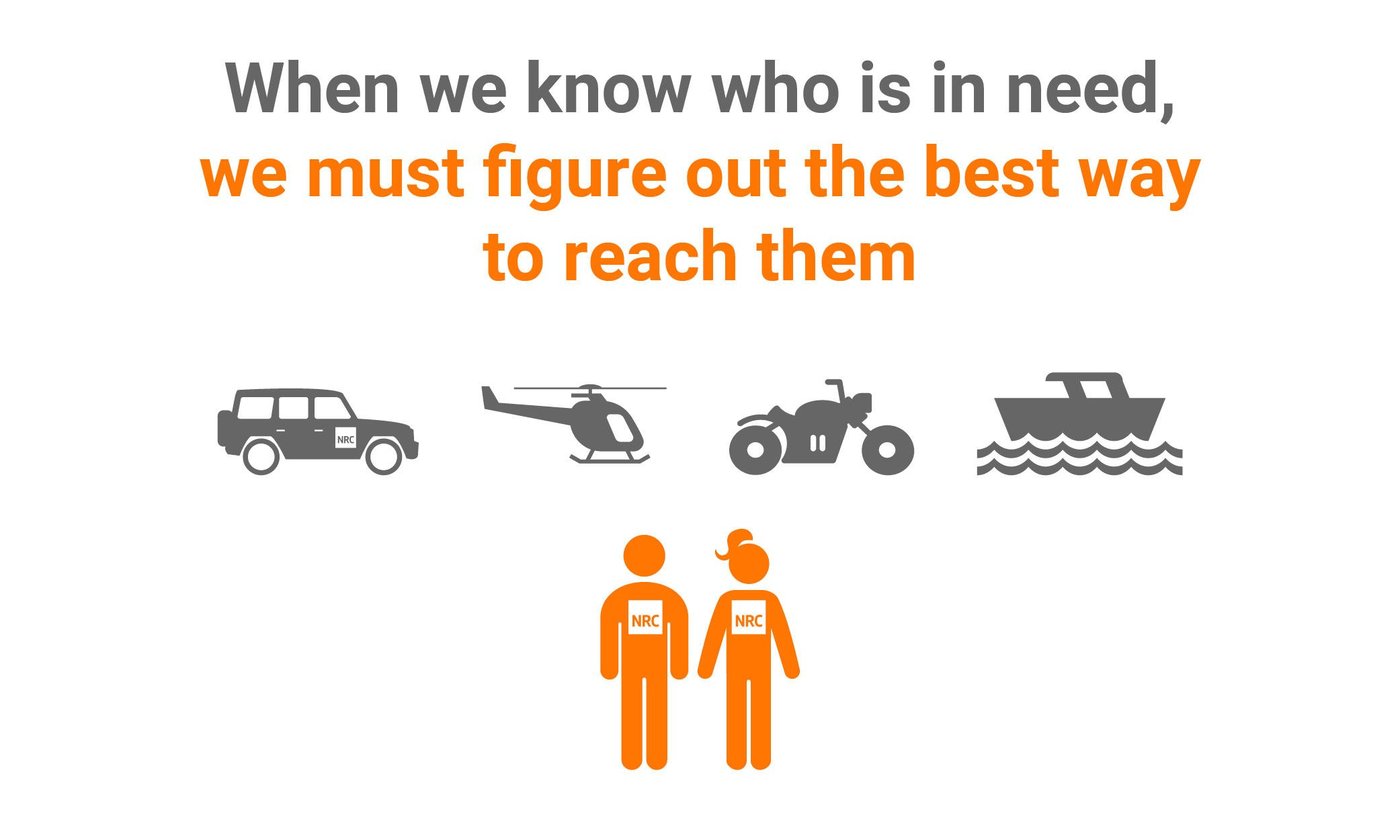
What do they need?
Once they have access, humanitarian organisations need to find out what kind of assistance the population needs. The team will talk to them to find out what they need right now, and what they will need in the months to come.
"We interview people to get basic information: are they single mothers or is there anyone with a disability in the family? What is the status of their current shelter?" NRC’s shelter and water manager Gareth Lewis explains.
NRC then identifies those who are most in need. Following a recent assessment in Syria, those who don’t have a tent to sleep in, or those who are living in overcrowded shelters, were selected. Arrangements are made to buy and distribute tents and other basic items to this population.
So far, in 2018 NRC has provided 107,500 people in Syria with adequate shelter.
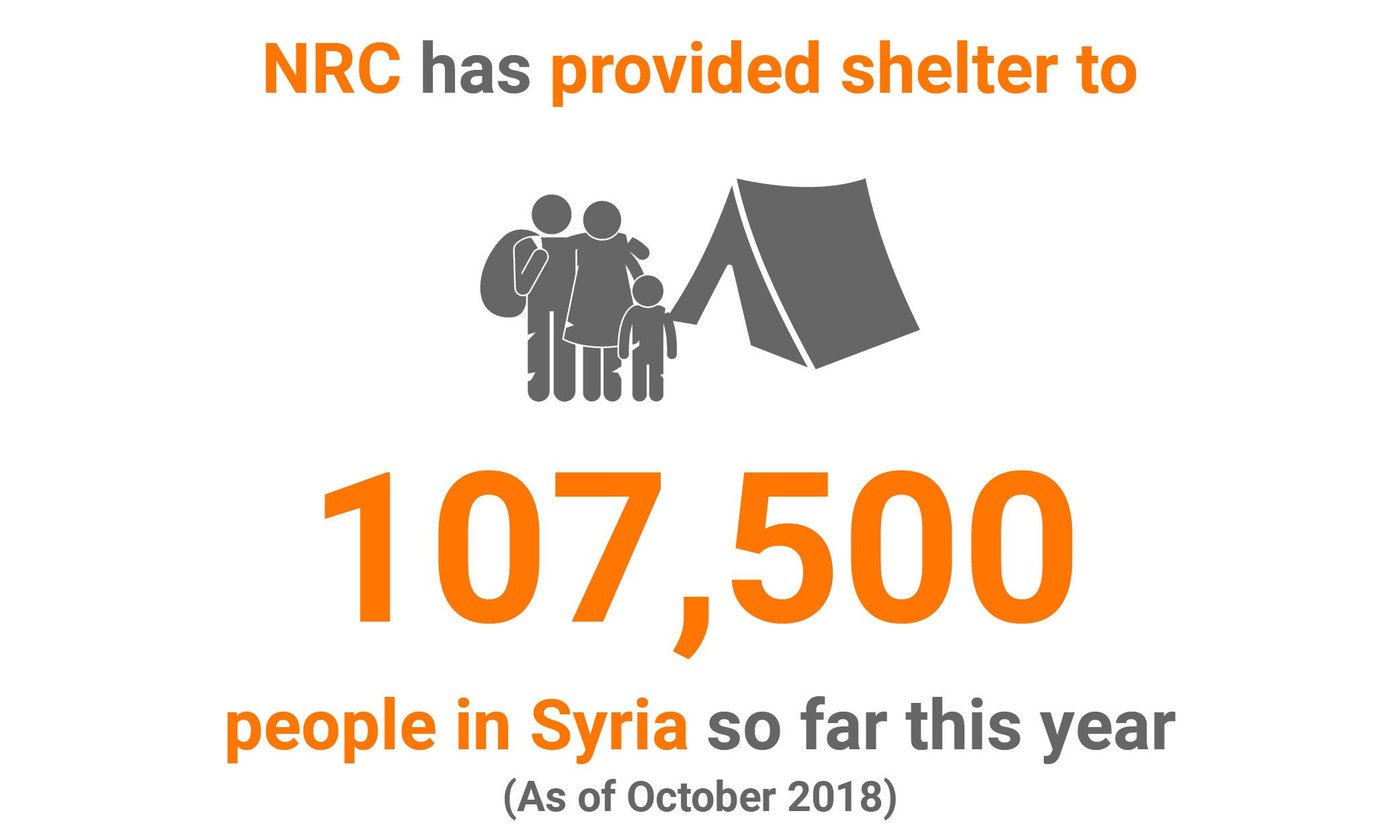
Delivering aid
The emergency response team will always try to buy the items that people need as close to their location as possible. When there has been a small-scale displacement, tents and other supplies may be bought locally.
However, when there has been a big displacement or emergency and there is a need for 10 - 20,000 tents, the teams will have to buy them in a bigger city or even internationally. The whole process of checking out the different samples, making sure everything is appropriate and finding the cheapest supplier can take months.
"We distribute tents, soap, toothpaste, mattresses, blankets and so on," says Lewis. “It might not sound like much, but it can mean a lot to those receiving it.”
"Since our tents can be locked, people can keep their belongings in them and feel safer. With mattresses, they don’t have to sleep on the floor anymore. These camps have been there for a long time, people stay there for years, so years of sleeping on the floor – that’s going to have health implications."
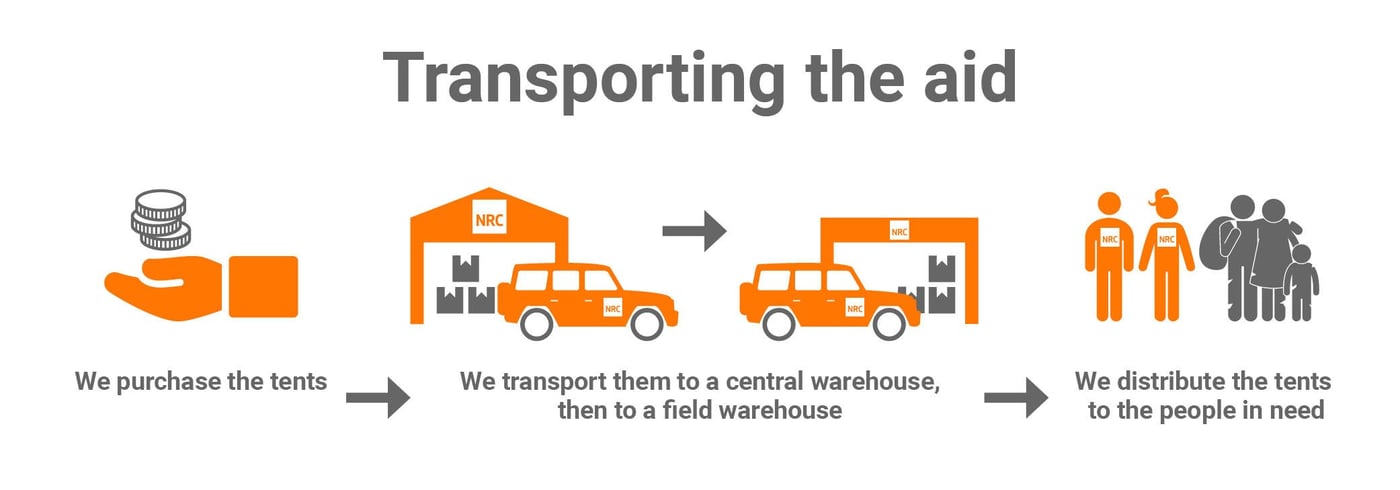
Crises are not always expected
Bringing aid into a country and to the people who need it the most can take a lot of time, and emergencies are not always possible to predict.
"Whatever has happened that has displaced people, also affects the infrastructure – roads might be closed, bridges may have collapsed. Conflicts don’t just affect people, they affect businesses, transport, roads,” says Archibald.
Sometimes, however, the emergency is anticipated. "When we have the opportunity, and we know there’s going to be displacement, we try to put stock in place in a location in advance, which means we can reach people a lot quicker," she explains.
In these instances, the humanitarian community invests in an emergency response preparedness plan. We assess the needs, store aid in advance and mobilise funds. The role of donors cannot be underestimated: A scale up in capacity and resources to meet the needs of a newly displaced population costs money, and donors are a vital source of support.
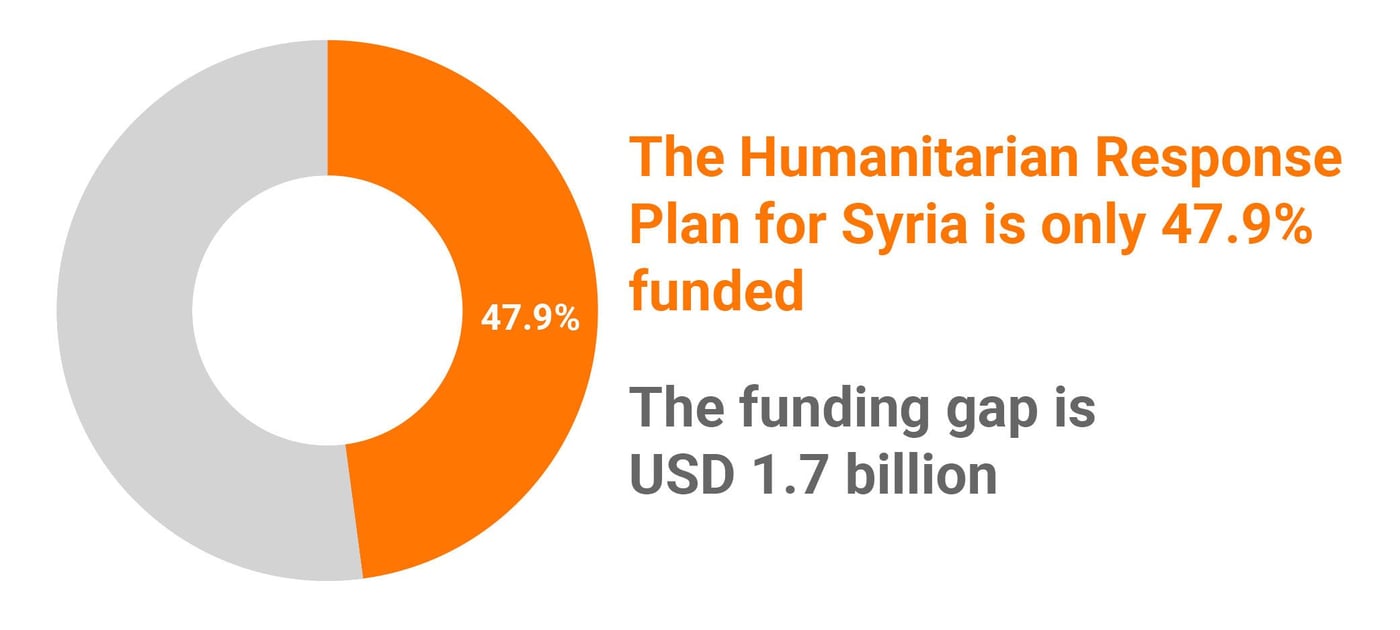
Protecting the rights of the displaced
In addition to preparing to distribute aid, humanitarian organisations have a moral obligation to speak out and ensure all steps are taken to protect civilians and prevent forced displacement.
Humanitarian organisations should warn against what may happen if adequate measures aren’t taken by parties to a conflict to protect the rights to those who might be displaced.
“This is important because it helps people access safety and services in the most uncertain periods of their lives, and when they feel extremely frightened and uncertain about what happens next,” says NRC’s Advocacy Adviser in Syria, Rachel Sider.
"I believe our role is to remind people that at the end of the day, despite the war and how it is conducted, all measures must be taken to protect civilians."
